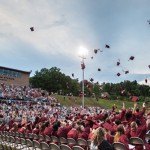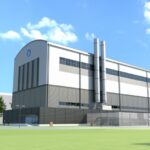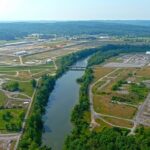Middle school students from Oak Ridge, Norris, and Oliver Springs are participating in an upcoming competition to determine what team will represent Tennessee in the middle school national finals of the U.S. Department of Energy Office of Science’s National Science Bowl.
The winner of the regional competition, scheduled for Feb. 1 at Roane State Community College in Oak Ridge, will receive an all-expenses-paid trip to Washington, D.C., to compete in the Office of Science’s National Science Bowl in late April.
The winner of the national competition will win prizes for the team members and their schools.
Here are the teams that are competing:
Oak Ridge
- Jefferson Middle School
- Robertsville Middle School
Norris
- Norris Middle School
Oliver Springs
- Oliver Springs Middle School
Other schools competing in the regional competition include four Knoxville schools—Cedar Bluff Middle School, Cedar Springs Homeschool, Concord Christian School, and Farragut Middle School—and two Maryville schools: Blount Home Education Association and Maryville Junior High School.
The Office of Science began this competition to interest today’s youth in pursuing careers in science and math, a press release said.
Here’s a blog post about the competition written by Charles Rousseaux, a senior writer in the DOE Office of Science.
Adding Students and Multiplying Scientists
The 2014 National Science Bowl is set to begin.
How do students multiply 1 by 24 and get 225,000?
It’s not that they’re bad at math—far from it. Rather, those students are participating in a singular event known as the National Science Bowl. Now in its 24th year, the event, which is sponsored by the Department of Energy and managed by DOE’s Office of Science, is designed to encourage the development of our nation’s future leaders in science and technology and train the next generation of scientists and engineers for DOE. More than 225,000 students have participated in the annual event since it was created in 1991.
From this January through the end of March, about 9,000 high school students on some 1,850 teams are expected to compete in 69 high school regional competitions, which will be held in 45 states, the District of Columbia, Puerto Rico, and the U.S. Virgin Islands. Another 5,000 middle school students on about 1,100 teams are also expected to participate in 48 regional competitions in 36 states and the District of Columbia. Regional winners will head to the National Finals in Washington D.C., scheduled for April 24-28, 2014.
During the competitions, teams of four students face off against one another in a fast-paced, question and answer format. They’ll be challenged to solve mathematical problems and tested on their knowledge of a wide range of disciplines including astronomy, biology, earth science and physics.
The questions are not easy—here’s a quick sampling from Round 1 of a practice set that goes all the way up to Round 17:
- As a percentage by volume in Earth’s atmosphere, what are the two most abundant gases in Earth’s atmosphere?
- What is the most common term in physics for the product of mass times velocity?
- What planet has the greatest variation in temperature over a single one of its planetary days?
Answers: 1) Nitrogen and oxygen, 2) Momentum, 3) Mercury
Improving students’ knowledge is one reason that DOE sponsors this, one of the nation’s largest science competitions. But the larger goal of the National Science Bowl is to inspire the nation’s future leaders in science and technology; to get them interested, to see them rewarded, and to start them on the way to building a better and brighter future. It starts with students with dedication, teams with ambition, coaches, and parents with pride. And it adds up fast. Each regional sparks new talent; each competition gives future scientists the confidence they can shine. Best of all, the knowledge and skills students learn will continue to grow well after the competitions have concluded.
So stay tuned for updates to the 2014 National Science Bowl. It’s a singular event that adds … and multiplies.
The Department’s Office of Science is the single largest supporter of basic research in the physical sciences in the United States and is working to address some of the most pressing challenges of our time. For more information please visit http://science.energy.gov/about. For more information about the National Science Bowl, please go to http://science.energy.gov/wdts/nsb/.









Leave a Reply